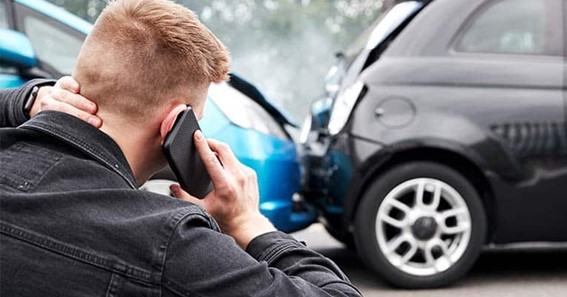An at-fault accident occurs when you or your insurance company is responsible for the damages. It'll almost certainly affect your vehicle insurance rates if you're judged to be at fault in an accident.a
Definition and Examples of At-Fault Accidents
A collision in which a driver is at fault is known as an "at fault" accident. It could be the result of a decision they made or didn't make. Even if the police or insurance company assigns 51 percent of the blame to you and 49 percent to the other party, you might still be held responsible. However, some types of accidents are clearer in terms of culpability and fault.Rear-Ending Another Car
If you hit the back of the automobile in front of you, you may have been driving too aggressively or following too closely. When this happens, insurance companies frequently assume you are to blame.Driving Under the Influence
Any statement regarding your accident will be tainted if you were driving under the influence (DUI) or while intoxicated (DWI). Drunk driving is so dangerous that most insurance companies will immediately boost your rates. If you get a DUI or DWI, your license can be suspended in 42 states. If you get a DWI or DUI, it may even be permissible for your insurance carrier to refuse to pay for your injuries.Not Obeying Traffic Signals
If you don't observe traffic and obey signals, signs, or directives, it's referred to as a "moving violation." All examples of moving infractions are driving through a red light, failing to yield, rolling through stop signs, and driving the wrong way down a one-way street. If you disobey traffic signs or signals and subsequently crash, your insurance provider will presume you're at fault. Points may be added to your license as a result of these types of offenses. Higher insurance premiums can be incurred as a result of accumulating more points.Using a Cell Phone While Driving
While it is not illegal to use your phone while driving in all places, texting while driving is prohibited in 48 states and the District of Columbia as of 2021. When an accident occurs, being on your phone does not always mean you were at fault, but you should be honest when informing the police about what you were doing when the accident occurred. Insurance companies view distracted driving as a major red flag. If you get a ticket for texting while driving, you should expect your insurance rates to rise. Your insurance rates will also rise if you cause a collision or fender bender while distracted by your phone.How Does At-Fault Accident Insurance Work?
Insurance companies use the legal notion of carelessness to determine who is at fault in an accident. This indicates you failed to act the same way a reasonable person would if they were in the same position. Your insurance company may utilize "comparative negligence" or "contributory negligence" to assign a percentage of fault to each motorist involved in the collision. The compensation you receive may be reduced depending on how much your actions contributed to the incident. Each state is different, but insurance is based on fault in most cases. States that fall into this category are known as "tort" states. The at-fault driver's insurance covers property damage. In tort jurisdictions, the at-fault driver's insurance carrier pays for repairs, medical fees, and other expenditures. In no-fault states, the insured person's medical expenses are covered up to a specific amount by their insurance company.What It Means if You're in an At-Fault Accident
Obeying the law and driving safely are the greatest ways to prevent being at fault. However, you may be judged to be at fault on occasion. You might make a split-second decision that proves to be incorrect. If you're in a car accident or a fender bender, the best thing you can do is not acknowledge fault at the scene. Then tell the truth about what happened. Exchange insurance information and take photos of the damage. Wait for the cops to arrive. The insurance adjuster will look at your account, the police record, the other party's version of events, and the extent of the damage. Then they'll figure out who's to blame. If you're judged to be at blame, the type of insurance you have will greatly impact what occurs next. The medical bills for you, any other passengers in your vehicle, and the other driver will be covered under the bodily injury liability policy. Collision coverage pays for the car's repairs. Make sure you're familiar with your state's minimal vehicle insurance requirements. If you're judged to be at fault, you'll want to have complete coverage for personal liability and property damage liability. If your insurance doesn't cover the damage to people or property caused by the accident, you could be sued for the additional expenditures. Accidents happen, and you can't always avoid them. In most cases, your insurance rates will increase due to this. However, there are precautions you can take to avoid causing a collision. While driving, put your phone aside. Avoid drinking or using substances that could impair your driving ability. Follow all traffic laws and safety regulations.Key Takeaways
- An at-fault accident occurs when the motorist did or did not do something that contributed to the occurrence.
- Drunk driving, texting while driving, and ignoring traffic signs and warnings are all at-fault behavior.
- In most states, car insurance companies will consider fault when settling claims.


